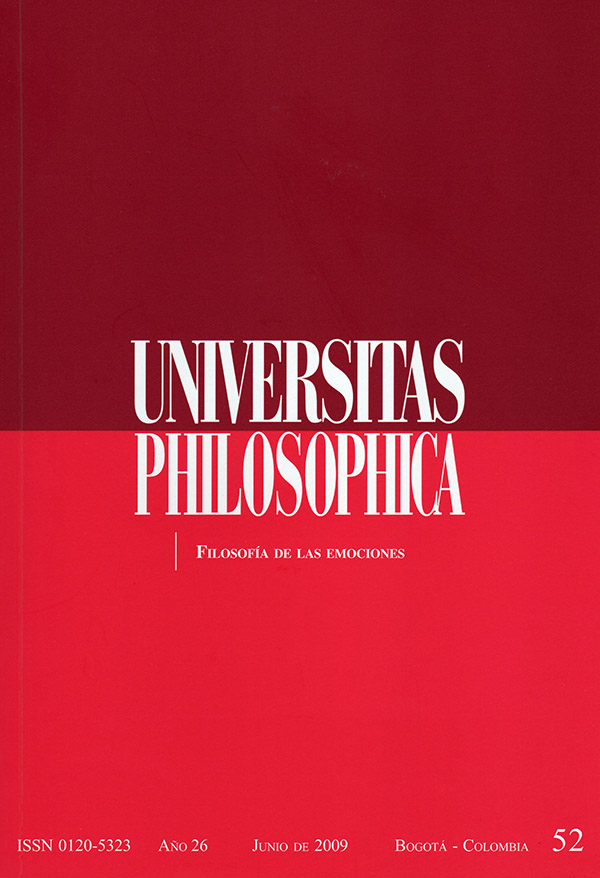Resumen
Presentamos una concepción anafórica del contenido de las emociones como clave para comprender adecuadamente el carácter normativo de las mismas. Asumiendo el valor adaptativo de las emociones, éstas se caracterizan como un tipo de dispositivo de respuesta al entorno que incluye un momento perceptivo evaluador y un momento expresivo orientado a la acción. La normatividad de las emociones consiste en que están sujetas a criterios de corrección que quedan satisfechos por la preservación a lo largo del proceso expresivo de la valencia emocional de la situación percibida. La valencia preservada puede entenderse como un tipo de contenido no-conceptual individuado con arreglo a una estructura de recurrencia anafórica. El modelo anafórico permite situar el foco del análisis de las emociones en los episodios de interacción social entre agentes emocionales y muestra su rendimiento a propósito de casos heterogéneos como el de asignación de referencia social.
Esta revista científica se encuentra registrada bajo la licencia Creative Commons Reconocimiento 4.0 Internacional. Por lo tanto, esta obra se puede reproducir, distribuir y comunicar públicamente en formato digital, siempre que se reconozca el nombre de los autores y a la Pontificia Universidad Javeriana. Se permite citar, adaptar, transformar, autoarchivar, republicar y crear a partir del material, para cualquier finalidad (incluso comercial), siempre que se reconozca adecuadamente la autoría, se proporcione un enlace a la obra original y se indique si se han realizado cambios. La Pontificia Universidad Javeriana no retiene los derechos sobre las obras publicadas y los contenidos son responsabilidad exclusiva de los autores, quienes conservan sus derechos morales, intelectuales, de privacidad y publicidad.
El aval sobre la intervención de la obra (revisión, corrección de estilo, traducción, diagramación) y su posterior divulgación se otorga mediante una licencia de uso y no a través de una cesión de derechos, lo que representa que la revista y la Pontificia Universidad Javeriana se eximen de cualquier responsabilidad que se pueda derivar de una mala práctica ética por parte de los autores. En consecuencia de la protección brindada por la licencia de uso, la revista no se encuentra en la obligación de publicar retractaciones o modificar la información ya publicada, a no ser que la errata surja del proceso de gestión editorial. La publicación de contenidos en esta revista no representa regalías para los contribuyentes.


